Tips for Quality Run Training Train no faster than one pace quicker than the race you are training for. For example, 5k pace is good for an Olympic-distance race, while half-marathon pace suffices...
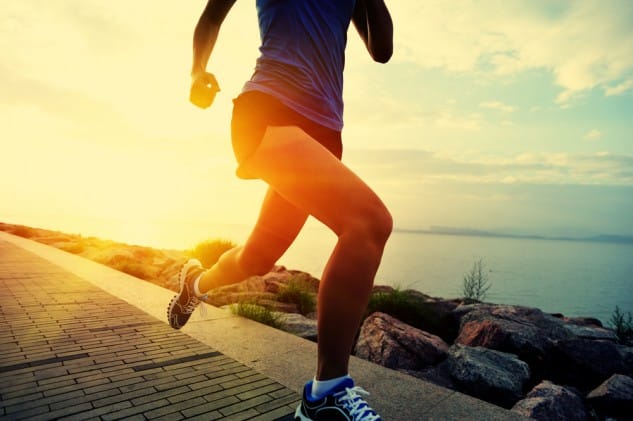

Tips for Quality Run Training Train no faster than one pace quicker than the race you are training for. For example, 5k pace is good for an Olympic-distance race, while half-marathon pace suffices...

Being immersed in the fitness industry provides me with a ton of different opportunities to experience different techniques, methodologies, and products. I recently had the privilege of a...
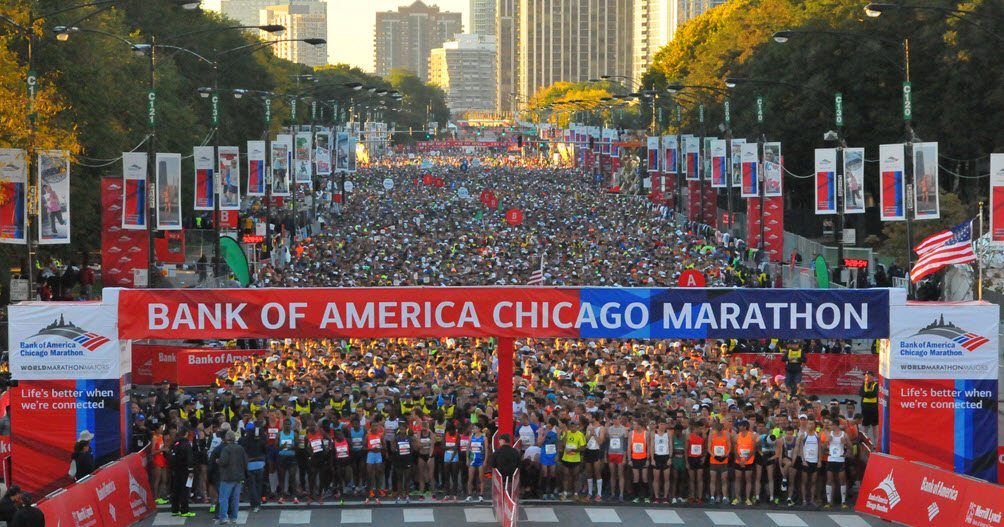
Leading up to the Chicago Marathon 2016 The Chicago Marathon provides an excellent course, plenty of support and, for me, a chance to visit home for a few days. It was no different for me this...

September 25 was going to be my day. The Ironman Augusta 70.3 triathlon was finally here. The race I had been training so hard for on one of my favorite courses. It was four-and-a-half months...
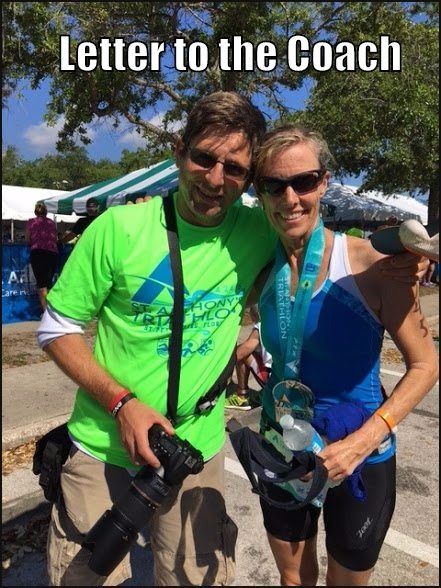
I have been an endurance coach for some time now. Once in a while, I receive an email from a client which chokes me up with pride. Today, I received one of those letters, so instead of sharing it...
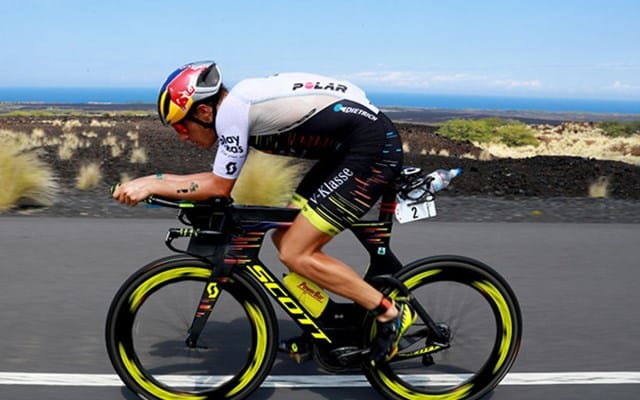
I found when looking for ways to get faster on the bike, is that there is so much information, from different coaches and experts, that it can be confusing and overwhelming. Personally, I...

(Edited by Brad Minus)
My 3 years of running experience started with multiple injuries including a couple of ankle fractures. However, I still managed to complete a marathon, a 50K and a 50-miler. Even with my injuries I completed these races successfully which is why continuing to increase my distance was so intriguing.
The Long-Haul 100 Ultra-Marathon race near Land O’ Lakes, Florida, was a great find as it was close to where I reside. Since the date of the race was over six months away, training time was in abundance.
I contacted my coach, Brad Minus, and with his careful planning, I would build my mileage up to over 75 miles a week. While my aerobic runs were the bulk of the training, Coach Brad included treadmill hill runs along with some strength training.
While I did end up with a minor knee injury, that I thought had put me behind schedule, I still ended up successfully running a ton of back-to-back long runs to simulate running on tired legs. I truly felt stronger than ever.
Already completing a 50-miler, I knew that the first half of the race was not going to be an issue. There was no waiver to my confidence when I considered 75-miles either, but the last 25 miles was concerning. Coach Brad did what he could to boost my confidence, but it continued to weigh on me.
Another issue I had, was nutrition. Born in Japan, I grew up on Japanese food and still prefer it, but having it available at the race aid stations was probably not going to be a reality. I wasn’t sure if I would be able to sufficiently fuel my body for 100 miles.
Sleep was also a concern. As a Neurodiagnostic Technician at Tampa General Hospital, I work first shift, so I had to complete my training runs super early in the morning, therefore my normal bedtime was 9 pm. Would I be able to stay awake? I wasn’t sure.
On January 19, 2019, I was standing at the start line healthy and anxious to start. I was not sure how fast I could complete the 100-miles, but I was confident I would finish under the 32-hour cutoff time.
Earlier, Coach Brad and I discussed what I would need in my drop bags. I prepared one with 4 changes of clothes, plenty of extra socks and 3 pairs of shoes. The other was full of food that I really enjoyed. (Coach Brad was adamant about this.)
My running attire would also include a hydration vest filled with Cliff Blocks, rice crackers, water, and electrolytes. The food drop bag would allow me to refill it at the end of each 12.5-mile loop.
With the sun peeking over the trees, the race started. The temperature was a crisp 60°F (15.5°C) with a slight breeze and even at 7 am it was light enough that I didn’t need my headlamp. It was sure to be used quite a bit later in the race.
With plenty of company on the course, I tried to maintain a “forever pace” that I was comfortable with. The weather was beautiful, and I was feeling great. What more could a girl ask for?
Feeling strong. I tried to eat/hydrate as much as I could, every 3 miles.
At the end of the loop, I saw my coach set up a special spot in the hub just for me!! That was a great surprise! I was able to stretch my legs and felt like I received the royal treatment. When the time came to get going on the next loop, I was feeling brand new again. This was thanks to following the implicit instructions by Coach Brad to change my shoes and socks every loop.
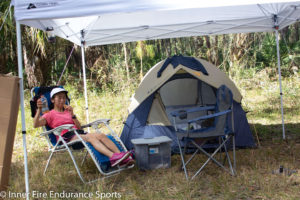
Maintaining my “forever pace”, I continued to feel strong despite a slight tinge of soreness in my legs. Of course, the temperature did start to rise, so I made sure to hydrate a little more, but still continuing my strategy of drinking every 3 miles. Finding fuel at the aid stations was not a problem as the plethora of food was covering the tables, but only the PB&J was calling to me.
The leg soreness increased, and I started to cramp, so I added some electrolyte pills to my arsenal of fuel. It seemed to do the trick as my cramps disappeared, however, new pain in my groin area started to plague me. I was still able to run, but to make sure I didn’t aggravate it more I included some walk breaks.
Later in the loop, I started to feel a little sick to my stomach which deterred my 3-mile nutrition plan. Part of the reason was I was failing to track my miles.
At the next aid station, I grabbed a banana thinking it would be easy to consume. After eating a quarter of it and as I continued on the quest, I just stared at it, not wanting to eat anymore, but knowing I needed the fuel I struggled but eventually finished it.
I wanted to run. I wanted to feel my legs churn underneath me with the wind in my face and my hair blowing behind me. Unfortunately, my left groin was hurting so bad. I just kept walking, praying it would go away. It did not.
I was still able to do some power walking with mild pain, so that is what I did. It was during this loop that the thought of a DNF crossed my mind.
Could I walk 50 miles and still make the cut-off?
I just kept walking until I saw the hub 7 miles later. I rested, stretched, then started walking again.
The mantra “pain is all in your head”, or something like that, repeated in my mind. I embraced it. I started running while continuing to ask myself “What pain?” and then I didn’t feel it.
Oh, but I was feeling it, but I kept shaking it off and continued onward. Soon after, I started feeling like myself again. Strong. So, like Forrest Gump, I just kept running.
Upon finishing that loop, I arrived back at the hub, and while resting I ate my precious rice ball. I was officially sick of PB and J. I didn’t want to even think about peanut butter. My rice ball was my savior.
At 6:30 pm I started loop five. I believe it was about halfway when darkness shrouded the trail and I donned my headlamp.
The pain in my groin continued, but it had diminished enough for me to continue. Strength enabled me to run more than walk as my stomach was also feeling better. When I returned to my hub spot, I was still very confident I could finish.
Upon the beginning of the loop, the groin pain was more intense. I was hoping I could shake it off, telling myself it was not hurting. And I did. I was able to keep going.
Prior to this time, the moon had helped to shed some light on the trail, but now it was really dark. To make matters worse it started raining. Not very hard at first, but then there were long periods of downpours. Portions of the trail were muddy which didn’t allow me to run.
I continued still feeling rather strong, despite the groin pain. My stomach felt better, but I was concerned I was not eating enough. The food provided didn’t appeal to me at all.
My pace and rhythm maintained toward the very end of the loop until the groin pain returned with even more intensity. Slowing to a walk, I crossed back into the hub, grabbed a cup of noodle soup, and hot chocolate. The hot chocolate felt good going down, but the noodles, not so much.
The pain was strong as I started the loop. Running was extremely painful, so I began walking, hoping I could shake this off again. This time, it wouldn’t let me. As I walked, I remember, thinking to myself, even if I walked the rest of the course, the cut-off time was not out of reach. So, I kept walking.
Unfortunately, the pain only got stronger and stronger and even walking became a struggle. My pace perpetually got slower, and I found myself stopping more often.
The rain continued and deteriorated the condition of the trail. It was awful.
At one point I slid. While trying to keep my body up, a shock of pain began shooting from my groin through to my thigh.
A lot of the other participants passed me, asking if I was ok. Out of sheer pride, I said “Yes”, but truthfully, I was not.
I remember looking down, staring at the ground with my headlamp light, just inching my way forward. I could no longer even lift my legs without severe pain.
The combination of the rain and standing water made the grass slippery and the mud thick. As I did everything possible to continue, I would slide on the grass and a piercing scream would follow. I realized that it was me who was screaming. Not only because I was in pain but because it was dark, I was alone, and I felt defeated.
This was the moment forcing me to face my biggest fear. It took everything for me to admit even though I trained so hard I would not finish.
It was around 6 am when I arrived back at the hub. Apparently, it took me about 4 hours to cover (barely) 7 miles. Walking the rest of the miles was no longer an option. I was done.
Immediately upon sitting down at my site, a surge of dizziness and nausea began to overcome me. The world started to darken. Realizing I was starting to pass out, I quickly inhaled some sweet tasting gummy bears. Feeling the sugar enter my system, was like someone turning up the brightness on my life and the ugliness started leaving me.
I felt so bad for the coach, being my only support during the race, I did not know how to tell him I would not finish. However, he understood me 100%. I have never given up easily and he knew I left everything I had on the course.
As much as I thought admitting it to my coach would be difficult, it was much harder to admit it to myself.
I did not finish the race, but I still learned a lot both from the training and the race itself. It was a great experience. All the runners were amazing and the volunteers at the aid stations were so kind and helpful. My coach supported me 100%. I feel lucky just to be able to run the race.
For the future, I have some ideas that I need to work on.
This was my first DNF (Did Not Finish) ever. However, this whole experience was priceless. I may have needed this failure in order to assure me future success.
Were you ever unable to finish a race? Or unable to finish it the way you wanted?
Tell us about it in the comments.
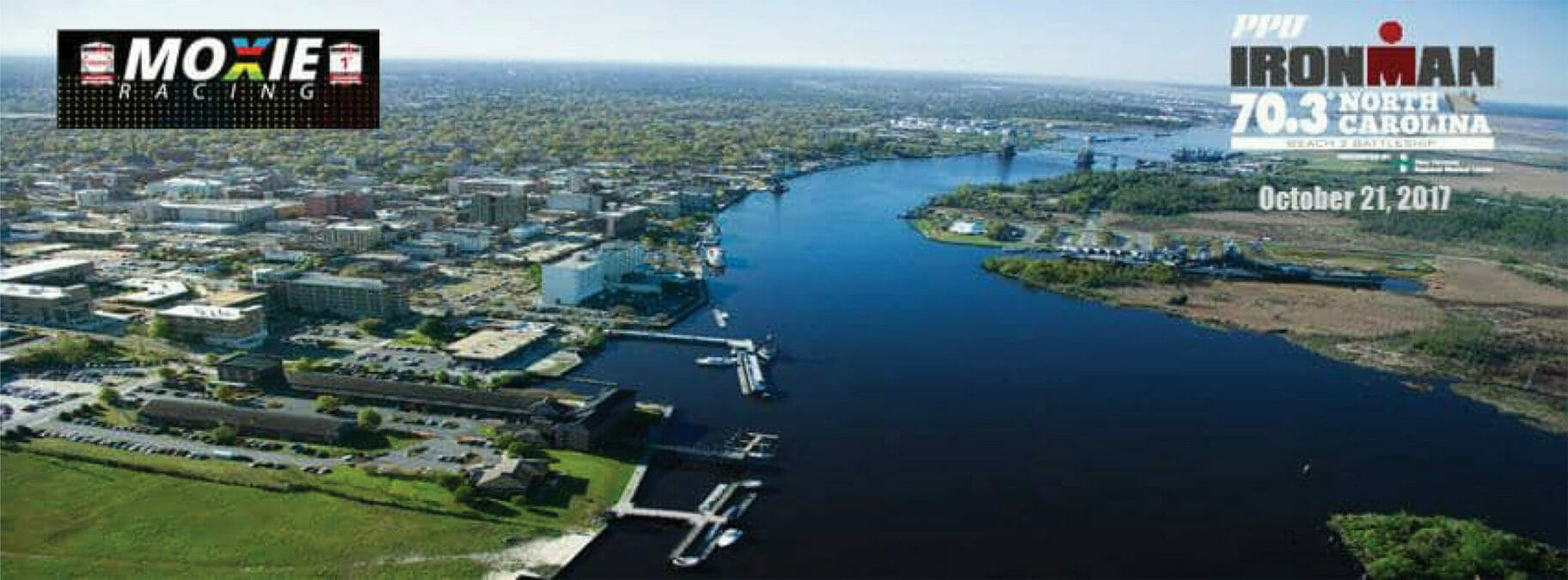
The Ironman North Carolina 70.3 triathlon was initially scheduled as my test race for Ironman Arizona the following month. Unfortunately, my last two triathlon seasons have been plagued with obstacles that have taken just a little longer to overcome than expected. Instead, it became my triathlon season closer.
Last year was a year of injuries, after being injury free for 8 years. This year I encountered an unknown virus that literally deleted my endurance for about 4 months. I trained hard, but I just wasn’t able to accomplish the long sessions needed to compete in a full Ironman distance triathlon.
Luckily, the virus vacated just in time to allow that training to manifest for the Ironman North Carolina 70.3. How about I tell you about it?
After a long, 10-hour drive, it was a treat to enter our rental home and find it had exceeded our expectations. It was an older home but well updated and extremely spacious. It comfortably fit the athletes, Jamie, Maria, Stephanie and myself, plus Maria’s husband Daniel and Chris our super-sherpa.

The next surprise came as we walked to the Ironman North Carolina 70.3 expo and found the finish line was only three blocks away and it bordered a street that literally led right to our front door. Yeah, baby!!
The Ironman North Carolina 70.3 expo felt even more sparse than the other 70.3 expositions I have participated in. It might have been because we walked in about 40 minutes prior to closing. This was something I was adamant about during the planning stage of the trip. I insisted that we try to arrive early enough to check-in on Thursday, so we would not be forced to wait in lines for either check-in or the Ironman merchandise store.
That night was filled with good conversation, Mellow-Mushroom Pizza and a couple of adult beverages. Nothing that would hinder our race, but enough to ensure a good night’s sleep.
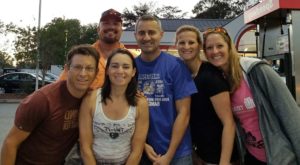
Wilmington or Bust
(L to R) Brad, Chris, Maria, Daniel, Jamie, Stephanie
Often enough, I insist and even put on my client’s training plans, that two nights prior to the race the objective is a good night’s sleep with no alarms the following morning. The intention is for the body to wake-up on its own signaling good recovery.
The night before a race, sleep is still crucial, but the reality is anxiety usually precludes, not allowing the greatest of sleep cycles.
The next morning, I was able to sleep in and awoke around 6:30 am. To my demise, there was no coffee in the house. As I was preparing a cup of tea, Stephanie awoke and coaxed me to the Brooklyn Cafe which was literally next door.
As we opened the door to the smell of fresh baked goods and coffee overwhelmed our senses. An older couple was behind the counter, we later found out were the owners of this 2-month-old establishment. Even with the newness of the cafe, they knew what they were doing. We had two orders of fresh, made to order beignets and coffee which, to my surprise, rivaled Cafe DuMont in New Orleans.
We watched one of the owners roll the dough, cut and drop the beignets into the fryer. He then served that fried deliciousness covered in powdered sugar. They were pure heaven. The coffee was fresh ground, organic, free trade and was rich and flavorful. It was so delicious, we bought a half-pound for the house.
The plan for the day was to head over to the swim start and jump in the water for 15 minutes or so. Following the swim, we would ride around the area to make sure our bikes were in working order and drive some blood to our legs. Finally, we would head back to the house where we would run for a couple of miles to get our heart rates up for a short time and test the legs.
It happened pretty much as planned. We were fortunate that a bunch of member’s of Stephanie’s coaching group, TriMarni, rented a house near the swim start, so we had a headquarters to park and store some gear. They had invited us to hang out there before the race the next day which we took advantage of.
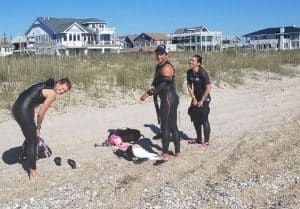
Pre-race swim
We were not allowed on the actual swim course so we decided to swim in the ocean. Upon entering the water I became excited as the density of the salt content, plus my wetsuit made my swim position and balance almost effortless.
800 meters later after returning to the house, we piloted our bikes refreshed. We spun around the area for about 20 minutes just to get the kinks out before heading back to run.

Pre-race Bike
(L to R) Jamie, Stephanie, Maria, Brad
Maria and I ended up being the only ones to run. She pushed the pace a bit faster than I wanted but I felt like I could take on the world.
Upon finishing the run I told myself that if I felt like I did at that moment, the following day was going to be epic.
After completing showers, packing and labeling our gear with the required stickers, we were on our way to T-1 to drop our bikes.
The transition from swim-to-bike was about 6 miles from the house, and as it was later in the day, traffic was dense. What should have been a 10-minute ride, turned into almost an hour before we turned in the school parking lot next to transition.
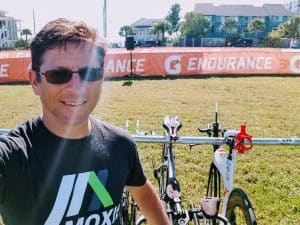
Transition 1 (T-1) Swim to Bike
Usually, bike drop for a 70.3 is just that, dropping your bike and leaving. The next morning would entail setting up your area to optimize time in transition. Ironman North Carolina 70.3 is a little different. Plastic bags are used to hold bike gear and placed on the bike. The only thing that can be done in the morning is the placement of nutrition. The gear was to stay in the bag until after the swim was completed.
This procedure emulates more a full Ironman than a 70.3, but I understood why. We were instructed to not leave anything on the ground for fear of ants. That made sense. The others decided to just keep their bike bags and bring them in the morning. I left my helmet and shoes in my bag, tied to my bike so I only had to install my nutrition in the morning.
The trip back downtown was not nearly as long, so Chris dropped us off and we walked to T-2 to drop our run bag.
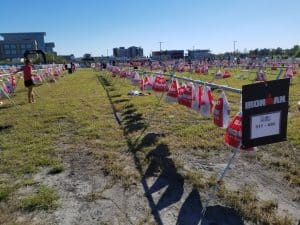
Transition 2 (T-2) Bike to Run
It was a little disconcerting that the dismount line was a quarter-mile away from the bike-to-run transition. We were going to have to run on a narrow, rubberized carpet over a rocky trail. We already saw, the quarter-mile run we need to take from swim exit to T-1. Obviously, we would have to plan on both transition times being longer than usual. Just another fun part of the sport.
I had several conversations with other athletes during the weekend about how most races had their own equalizers to level the field. Ironman Augusta 70.3 has a downstream swim, but the bike is hilly which for a lot of age groupers would be a detriment. Ironman Chattanooga 70.3 also has a downstream swim but has a very hilly run. This race, Ironman North Carolina 70.3, would have a current assisted swim but longer distances within transitions.
That night, I separated from my housemates to attend the Tribal Multisport dinner. An Uncle of one of our athletes, Michael, owned the South Beach Grill close to the T-1. The food was excellent and the company was better. The evening went incredibly smooth and faster than most group dinners I have attended. I think it was just shy of 90 minutes from the time we sat down to the click of the group photos being taken.

Tribal Group Dinner
South Beach Grill is another restaurant in the Wilmington area I would highly recommend.
I arrived back at the house, double checked that my race kit, nutrition, race chip, swim cap, and goggles were ready to go, the coffee was ready to be brewed, and breakfast was prepared for the next morning. Two episodes of “Gotham” later, I fell into a fitful sleep.
Exuberance filled me as I awoke on race day. Other race mornings I remember awaking anxious, or nervous, but today I was a little more calm than usual. I felt an extra confidence that I hadn’t felt in a while. My thoughts initially went to coffee and breakfast, but after fulfilling that objective, they migrated to visualizing the race.
We arrived at T-1 at about 5:30 am and proceeded to set up our transition stations. Normally this would mean setting up towels, bike shoes and helmets, but we were told that would not be the protocol here. Basically, the only thing allowed was placing nutrition on our bike and bike shoes attached to the pedals if desired. Other than that everything else had to remain in the bag.
I placed my bottles in their cages, and hung my bag from the aero bars, checked my tires, installed my computer and validated that my bike was in the desired gear.
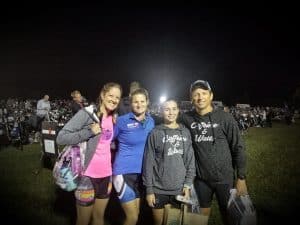
As I headed towards the exit to meet my housemates, I was excited to socialize with a couple of Moxie, Tribal, and Outspokin teammates. The social aspect of the triathlon community is one of the things I love about this sport. Yes, there is competition, but most of us are truly just racing against ourselves. We are just trying to be better than we were before.
We passed through the waiting area at the swim start, that my friend Beth Shaw, who writes Discombulated Running, deemed the “Triathlete Refugee Camp”. I could see where she was coming from. Since the first wave didn’t start until 7:20 and it was only 6 am, most of the athletes were lying around or sitting on the asphalt chatting.
My party headed to the TriMarni house which was a beautiful beach house. It was three stories, with ceramic tile throughout, beautiful countertops, and the best part, multiple bathrooms. Having a full-fledged bathroom to do your duty, prior to a race, is a special treat rather than a potentially disgusting portlet.
Upon entering the house, the tension of race day filled the air. Everyone was milling around drinking either their own pre-race formula or coffee, nervously chatting, anticipating the upcoming moment to head back to the refugee camp.
Around 7:00 we stepped onto the asphalt, gave each other hugs, said our “good lucks” and proceded with our own pre-race routines.
I donned my wetsuit, dropped my sweatshirt, and flipflops in my morning bag, and placed it in a much larger bag marked with a range of bib numbers that included mine.
Noticing all the other white swim caps lined up. I joined them and proceeded to move and stretch nervously.
The waves moved together toward a crosswalk. A few minutes prior to the specified wave time, a crossing guard chauffeured us to the other side of the street. On the other side, we cautiously entered the water, via a slippery boat ramp and anxiously awaited the start horn. The announcer counted us down from 10, and we were off.
The temperature of the water was 71 degrees Fahrenheit, but the air temp was in the upper 50s actually making me warmer. I allowed water to fill my wetsuit and compress to my body and waded close to the start. The horn blew and we were off.
The plan for my race included taking the swim at a steady, aerobic pace. The swim event at Ironman North Carolina 70.3, has a strong current, assisting the athletes. As I have stated, many times, I am not a fast swimmer so I will take any help I can get.
Swimming towards the buoys I could feel current, but as I gathered my line I didn’t notice it as much. My stroke felt the same as in the pool, and I was cognizant of my effort level, ensuring I didn’t overdo it.
It took a good 300 meters, but I finally found a comfortable rhythm. My nerves settled and my mind calmed into race mode. That, was until I ended up in a swarm of swimmers all vying for clean water.
Surprisingly as I was sighting I noticed the dark green caps of the previous wave. WHAT??? I had been focussing diligently on my swim, but I was usually enveloped by the wave behind me. I never caught anyone in the wave prior before. Holy crap! It was an amazing feeling.
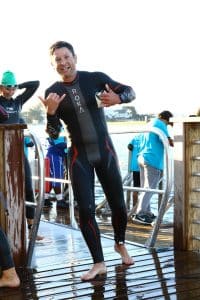
Out of the swim. I look pretty dope in my wetsuit right?
Just as I was getting over my shock, I sighted on the next buoy and noticed it was moving. Yeah, it was being pushed out wider by a volunteer in a kayak. I literally yelled, “what the hell?” Finally, swimming around it, I found clear water and my relaxed rhythm again.
I always tend to hug the buoys during a race. For me, it makes sighting easier and keeps me swimming pretty straight. However, I noticed most of the athletes found a line about 10 meters to my right. After climbing the ladder out of the river on my way to T-1, my eyes darted over and I noticed, the current was stronger more to the right of the buoys. I missed a major advantage, but it didn’t bother me too much as I still PR’d the swim.
Glancing at my watch after clearing the ladder it read 31 minutes and change, however, I did not know where the timing mat was, so my official time was slightly slower.
Swim Time: 33:45 (1:44 per 100m)
Wetsuit strippers were set up just a few yards from the exit of the swim, which made it easier to run the quarter mile to transition. I emptied the contents of my bag on the ground, and refilled it with my wetsuit, cap, and goggles, and donned my helmet and shoes.
During my setup, I was in a quandary about wearing socks on the bike as I had worn them most of the time during training, but that morning, I decided I really wanted dry socks for the run without exchanging socks in T-2. Therefore, since I did have experience racing sockless, I slipped my feet into my shoes, grabbed my bike and rolled out of transition.
From exiting the water to the mount line felt like forever and it showed in my time.
T-1 Time: 6:28
Usually, the plan for my 70.3 distance races included holding a steady power of 185-195 watts. However, during the last two races, my run had suffered. This time I modified the plan to start at a steady 175 watts. I would then progressively increase my output to 185-190 watts, in the second half of the bike, depending on how I felt.
My nutrition was simply a quarter of a bottle of Infinit, every 15 minutes and a Chia Humma gel or half Bonk Breaker every 45 minutes. This would fortify my body with 900 calories by the end of the bike. The swim would have been fueled by breakfast and a pre-workout Cliff Bar, so 450 calories would sustain me for the bike while another 450 would help to get my run started.
The first couple of miles of the course is around a residential area, so it was tough to keep my speed up, especially since I had some novice riders around me, but by the beginning of the third mile, it was on.
The first half of the bike was reasonably flat and fast. I surprisingly found myself passing a lot of riders even at a low 175 watts. Speed is not a data point visible on the display of my Garmin Edge 520 bike computer. However, I do have a 5-mile auto-lap which briefly displays the lap time.
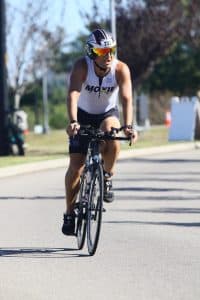
Looking like Judge Dredd on the bike
With the exception of the first five miles, the display consistently read under 15:00 minutes every lap. Most of them were under 14 minutes. Obviously, 20 mph equates to 3 minutes per mile. Therefore every lap that read under 15 minutes meant I was faster than my previous race.
It was tough to maintain my planned 175 watts knowing I had more in the tank and I could easily increase my speed. Deviating from my plan never worked out well in the past, so I hunkered down and stayed the course.
Mile 30 came and went in a flash. I did increase my wattage a little on a couple of short hills, but other than that I was pretty consistent. That was until I ended up trapped in a peloton.
It was maddening. I would slow down to allow the mandatory 6 bike lengths, and it felt like the whole group would slow. Surging forward I would create a good distance between myself and the rest of the athletes, hold my watts, but they would envelop me again.
The question became how could I get out of this mess without, one, increasing my wattage to a point it would detriment my run, or, two, getting a penalty for blocking or drafting?
At mile 45, I was so angry that, involuntarily, the words, “Screw this” came out of my mouth. I surged forward to a point where that group was no longer even visible behind me. That empowerment gave me so much confidence I maintained 190 watts to the mile 57 dismount line. Yes. The course was a mile long which was congruent with a lot of other athletes.
Bike Time: 2:37:18 (21.9 mph average)
After dismounting, I ran with my bike to the rubber carpet to enter the transition area as fast as possible. However, the one-lane chute was crowded. The polite athletes, like myself, shouted “on your left” sacrificing our feet on the jutting rocks. There is some recollection of other expressions in “MA” category, filtering through the air from others that were just as frustrated.
Entering under the arch into transition I could see my bag hanging from the rack. Using a regular shoestring knot made it easy to drop the bag and spill the contents. I sat on the ground, rolled on my socks, put on my shoes, grabbed my sunglasses, hat, and race belt and ran the other 200 meters to the run-out arch.
T-2 Time: 4:16
The last couple of 70.3 races entailed some pretty slow and miserable runs. That is if you can call them runs. They should have been more characterized as fast walks with a couple of miles of slow jogs thrown in. Ironman North Carolina 70.3 was going to be different and I didn’t care how much it hurt. I was going to run consistently the full half-marathon, but I would run it smart.
The plan was to start a little slower for the first 3 miles. I would then either negative split or just remain consistent for the remainder. Brief recovery was included in the plan by briskly walking only through the aid stations.
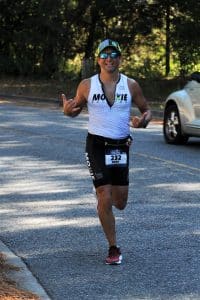
My signature run pic
Since my plan started somewhat slow I prepared for the onslaught of athletes passing me at first. I learned a lesson early in my triathlon experience. Starting with a faster pace was a sure fire way for the run to be a sufferfest.
The first mile felt slow but easy. There were no issues breathing and besides a tightness in my quads, which was normal, I felt really good. A sure fire sign that I should have a good run.
At mile 2, our Super Sherpa, Chris, snapped some pics of me as he pedaled around on his mountain bike. I asked about the others and he assured me that everyone looked great. That news put a little spring in my step.
The Ironman North Carolina 70.3 run course is out-and-back course. I could see the runners on my left running in the opposite direction. Obviously, during the first half, I would see them running to the finish line. Then running toward the turn-a-round during the second.
Prior to mile 5, familiar colors and prance came into view. Nick Zivolich, screamed opposite me, in his Best Damn Race tri kit. We high fived yelling some motivation to each other. I was not surprised he was ahead of me, but somewhat frustrated realizing he started 15 minutes behind me. Not to mention he was almost an hour ahead of me. I cleared that out of my head quick. This was my race and I was going to complete my plan to the finish.
Around mile 6, Maria sped by, followed by Stephanie a mile later. They both started 20 minutes ahead of me so I didn’t mind that at all. To pass the time, I figured out how far ahead they were and what it would take to catch them. I did end up figuring it out and if I were Meb Keflezighi or Patrick Lange it would be possible, but unfortunately not me. Well, not yet.
My watch consistently ticked off 9:20-minute miles which were expected since the plan included walking through the aid stations. It did mean my actual running pace was under a 9-minute mile. Coming off a strong bike that excited me.
Miles 6 and 7 included a run through a small park prior to the turnaround. A single track, paved trail started a small  section where the turnaround and timing mat was located. Entering this section is where I crossed with Jamie. She looked like she may be struggling a little, but strong enough to finish without too many complications.
section where the turnaround and timing mat was located. Entering this section is where I crossed with Jamie. She looked like she may be struggling a little, but strong enough to finish without too many complications.
The idea of catching her ran through my head. I would start testing a faster pace to determine if that would be possible.
As I was exiting the single track, Michael, one of my Tribal teammates, entered. Now Michael is fast. A 7 minute-mile runner for sure. Now I had two challenges, catch Jamie and keep Michael from passing me. If anything, the last 6 miles would be fun.
Mile 8 came and went. Passing mile 11, the familiar Tribal cap with an audible, pat-on-the-back whizzed by. It was Michael. Truth-be-told, at the time I was feeling pretty proud holding him off that long.
Mile 12 included a somewhat steep ascent back into downtown Wilmington. Glancing at my watch and saw my run time was 1:54. My hopes were for a sub-two hour run. Unfortunately, it just wasn’t in the cards this day, but I would come close.
My traditional burst of speed came entering the Ironman North Carolina 70.3 finish chute. I leaped for a Moxie Dunk at the finish line as exhaustion washed over me. The knowledge that the time clock indicated a PR felt positively overwhelming. I accomplished what I came to do. I followed my plan and succeeded.
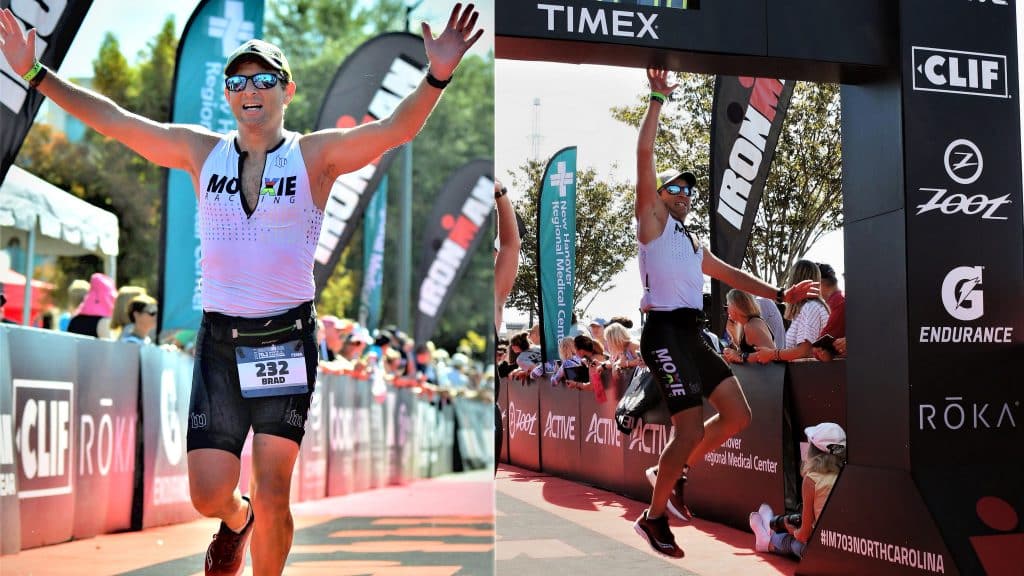
Run Time: 2:04:29
Total Time: 5:26:16 (PR)
The 2017 Ironman North Carolina 70.3 event distances did not have to be modified. That being said, I could officially consider this my PR by over 10 minutes. Earlier in the year, I completed Ironman Chattanooga 70.3 in 5:25, However, the swim was cut short by 800 meters, so I refused to count it.
The finish area displayed jubilantly tired athletes, vendors, and food tents. With a smile and skip in my step I found Tribal teammates, Joey, Michael, and Brian K. Everyone seemed as excited about their performances as I did. Joey and Nick both received 3rd place in their age group. Nick’s triumph grabbed him a spot to the 2018 World Championships in South Africa. Michael, Brian K. Stephanie and I all PR’d, so it was a great day for all of us.
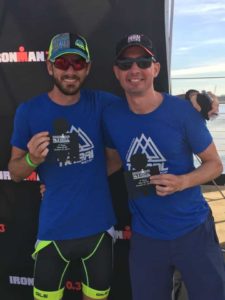
Nick and Joey show off their 3rd place plaques
I am so proud of my friends, and teammates for what they accomplished. It is such an honor to be among them.
Both my bike and morning bag were waiting for me at the bag check area and the volunteers were extremely efficient to procure them for me. A quick walk later I retrieved my bike and bag from T-2 and rode back to the house.
The rest of my time consisted of Irish Car Bombs, a Phở lunch and a visiting some breweries around Wilmington.
Wilmington is a beautiful area. I hope to return to race Ironman North Carolina 70.3 again in 2018. I will have to include a couple of extra days to hang out.
Did I mention that hit shows, “Dawson’s Creek” and “One Tree Hill” and some major motion pictures were filmed in Wilmington?
What was your best race or event of the year?

I had every intention of getting some vindication on the Ironman Chattanooga 70.3 course this year. I made a plan, trained for it, and stayed healthy, but unfortunately it did not come to fruition as I expected.
Last year I toed the line injured at Ironman Chattanooga 70.3, and struggled with all three of the events. The swim was not as fast as I expected. They controlled the water flow so the current was minimal. The bike was rolling hills of which I trained for and was much stronger on the bike, but I made the mistake of pushing the pace which completely screwed up my run. The roller coaster terrain of the run ended up beating me as I walked a huge portion of it. Last year I ended up with a 5:43:30.
This Ironman Chattanooga 70.3 was going to be different. First, I was going to work with my coach on my weaknesses . Second, I completed a higher quantity of brick workouts including not only bike to run, but also swim to bike and swim to run. Finally, I maintained my recovery routine, which was a mistake I dealt with last year. My overall nutrition was better and I was in the gym a lot more. I really felt confident in my abilities to conquer the whole course and receive my vindication.
The trip up to Ironman Chattanooga was pretty uneventful. Josh Wilkins and I drove up together which was a reoccurring theme from last year. The only exception was we followed Rick and Laura Jansik the whole way. Rick set us up with a room at the Marriott Residence Inn which was two blocks from the expo and transition. This was a nice change from last year where Josh and I stayed a few miles out of town where we had to worry about parking and timelines. This location gave us increased access to transition, the expo and swim start. We parked the car in the hotel parking area and didn’t touch it again until it was time to leave.
The Ironman Chattanooga 70.3 expo was no different than any other Ironman expo. Vendors from nutrition, equipment and apparel companies littered the lot with their goods and a couple of small food trucks supplied some fast treats to fuel up the participants.
On a surprising note, when I went to check-in I found out I was an Ironman All World Athlete. The All World Athlete program houses the top 10% of the age group athletes. It is separated into three tiers; the top 1% are considered gold, the top 5% are silver and the top 10% are bronze. Obviously, I am in the bottom of the tiers. I guess my age is starting to give me a little bit of an advantage.
What was the difference at registration? The AWA athletes have their own entrants into registration which usually allows for a faster experience, and I was given the option of wearing an AWA swim cap versus the AG swim cap. For a free program, I’ll take it.
The weather report loomed over us the entire week prior and, all the way up to the morning of the race. Satellite images and forecasts expressed a large mass of thunderstorms moving at just the right velocity to hit Chattanooga at the start time. The stir of conversation about the weather was popular among all the athletes competing.
Some were worried about the swim being cancelled. Others were concerned about navigating the terrain of the bike course safely. The only agreed upon positive comments were about the run. No one cared if they had to run in the rain. It just meant it would be cooler. Either way the conversations around the weather were consistent with all of the competitors we chatted with.
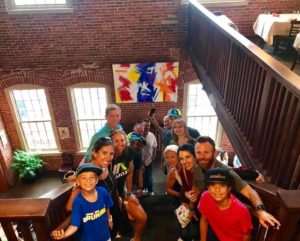
I was invited to two Ironman Chattanooga 70.3 pre-race dinners; one with Moxie, my national team, and one with Tribal, my training team. While my plans were to start at the Tribal dinner just to say wish everyone luck and then head over to Moxie, they derailed once I realized how far apart they were. The Tribal dinner at Food Works was delicious but it was the calm of athletes around the table which is what I really needed at the moment. These were the people I train with all year long which at first is why I wanted to attend the Moxie dinner because I do not see those teammates, but at that time in which my mind was preparing for the race at hand, my heart wanted to be with these friends and training buddies.
That night my light sleeping pattern made me aware of the lightning, thunder and rain enveloping the area that night. My dreams were plagued with worry of the bike course and entailed specific turns of the course where I may be in danger. I am never really worried about my own bike handling, it is the others cyclists I worry about, and my subconscious coupled with the storms brought those fears to the surface.
Sometime during the night, my fears quelled, and I was lulled into a peaceful sleep. I awoke refreshed, excited and surprised. The weather conditions had completely changed. The storms had dissipated and the forecast only called for some possible scattered thunderstorms later in the afternoon. Ironman Chattanooga 70.3 was on with no deviations.
There was a small change to the procedure this year. Last year we lined up for the swim start on a first-come-first-serve. The advantage being on the Moxie team was that a team sherpa went to the start at 4:15 am and setup camp so the team could just filter in when they arrived. This year the athletes still lined up but it was by projected swim time. My threshold swim pace is just below 2:00 per hundred which would be approximately 30-35 minutes, so I lined up in the 30+ minute swim line.
There I found Oscar Alvarez and a few other Moxie teammates. We nervously chatted while preparing for the event at hand.
My recent purchase of a ROKA Maverick Elite full wetsuit increased my excitement for the swim. ROKA’s introduction of their “Arms-up” technology resonated with me, due to my experience in Maryland. There I could feel the limitation in my shoulder mobility in the orginal Xterra Vortex wetsuit I had purchased 5 years prior. During my test swims and at Escape from Ft Desoto I was impressed with the flexibility in the arms which left no limitation to my stroke. This swim would further validate that.
After an amazing rendition of our National Anthem, the gun went off for the professional athlete starts. Something was a little off though. The course starts with 300 meters upstream then turns for the remainder of the course down stream. The professional athletes were charting times of almost 5 minutes to get to the first buoy.
As it turned out, the water flow was not controlled as much as it was supposed to be, so the current was a lot faster than expected. Due to the extraordinary amount of time it took to go upstream, the officials decided that the age group race would not include the upstream portion and the swim would be shortened.
It was so ironic that all of us athletes were worried about the swim being cut-short or cancelled because of the storms, and here it was being cut short because of the current.
After a twenty minute delay in order for the buoys to be moved and announcements to be made, the line finally started moving. My heart was jumping as it always does prior to a race. I really wanted to do well this time. My plan was to swim strong, but not overdo it, keep the power to 190-200 watts on the bike and run a 9 minute or less mile on the run. I went over and over this in my head prior to jumping off the dock into the 74 degree water.
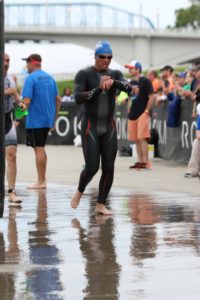 The Ironman Chattanooga 70.3 swim was no less than glorious. The early part of my plan was being executed as I easily rolled, reached and pulled my way toward the swim finish. My weakness in open water has always been sighting, so every few hundred meters even with sighting correctly, I usually end up changing to a breast stroke to get my bearings. This time, I was able to get through to the finish without changing at all. I did modify my stroke to a Tarzan stroke a few times to validate my sighting, but that was it.
The Ironman Chattanooga 70.3 swim was no less than glorious. The early part of my plan was being executed as I easily rolled, reached and pulled my way toward the swim finish. My weakness in open water has always been sighting, so every few hundred meters even with sighting correctly, I usually end up changing to a breast stroke to get my bearings. This time, I was able to get through to the finish without changing at all. I did modify my stroke to a Tarzan stroke a few times to validate my sighting, but that was it.
I reached for the volunteer helping us out of the water, stepped onto dry land and glanced at my watch. It was excitedly surprising to see my time 21 minutes. I knew the course was shortened and we were moving with the current, but it was still over 1400 meters. Not to mention, I felt amazing.
Sprinting into transition with my wet suit in hand my thoughts went back to my plan. If I just stayed between 190 and 200 watts I would have plenty for the run. I rolled my socks on, stepped into my shoes simultaneously sliding my helmet onto my head and buckling it then slid my bike from the rack and ran out of transition. It still felt a little slower than I would like, but I was excited to be on my bike.
Not to far after the 10 mile marker I was playing cat and mouse with a group of riders, when I saw a familiar kit standing at the side of the road with her bike down. It took me a minute to process that it was Yelena Maloney, a training partner from Tribal. I immediately turned around to see if she was ok. It was instinct. I didn’t even think I just found my body making the decision and executing.
When I arrived to her location I asked her if she was ok. She stated, “I am fine. I have been here for 5 minutes already so my race is over. Just go.” I replied, “Just as long as you are ok” as I turned around to continue my race. The SAG vehicle arrived as I left, so I no longer felt the worried for my friend and I was able to concentrate back on the race at hand.
Within the next 15 minutes I found myself right back with the familiar kits and bikes I was around 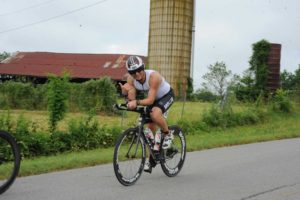 prior to stopping. I still felt great, and at that moment, I was executing the plan as precise as possible.
prior to stopping. I still felt great, and at that moment, I was executing the plan as precise as possible.
Some of the steeper and longer inclines did not allow me to keep my power range even in my highest gear, but they were so few and far between I didn’t think it would cause a major issue at the time.
Around mile 40 I rode right into my first major obstacle. I was behind an athlete in a University of Florida kit when I decided I was going to pass him. USAT rules state that you have twenty seconds to pass and if the attempt fails you must slow to the six bike lengths behind the rider before attempting it again.
I started to accelerate slightly in order to pass, but he accelerated right along with me. Not wanting to push my watts to much, after what I thought was 20 seconds I dropped back. Immediately, I realized I was slowing way down and was not getting any space between his back tire and my front. “Screw this” I thought, and started to accelerate to pass him with a little more force. Wouldn’t you know it, he accelerated right with me…again.
Of course, I slowed down again to get acquire the regulated distance as my ears detected the sound of a motorcycle. One of the officials was headed in our direction. I motioned and yelled to the official that I was slowing down, but of course, so was my “friend” ahead of me. So, it looked as though I was drafting.
As the official was writing in his notebook, I tried to tell him that I was slowing down and that he was slowing down too, but it wouldn’t be accepted by the official. He yelled to me to stop at the next penalty box and tell them I had a blue card.
Due to the penalty I subconsciously equated the extra time, and immediately accelerated which would forgo my plan for the next 15 miles. I don’t exactly recall, but I believe my thinking was that I would get a 5 minute recovery in the box, so why not step up and try to make it up. Since the box I was going to end up in was located just prior to the dismount line, I wouldn’t have to power through any more before transitioning to the run.
After arriving at the last Ironman Chattanooga 70.3 penalty box and releasing the negativity of the official, the volunteer stated that they were on a roll today and that a group of over 15 riders had just finished their 5 minute penalty. Just about as my time was at completion I glanced over at the runners starting their 13.1 mile leg and noticed Yelena speeding through the first hundred yards.
As I yelled to her, I was surprised. That meant that she got her bike fixed and must have passed me into transition while I was stopped int he penalty box. I wondered what she had to have had to make up in order to get there that fast. I later learned she was four minutes behind me after the SAG staff was able to release her chain from being stuck behind the crank and get her back into the race.
T-2 went smoothly and was only slightly delayed by my 47-year-old bladder that needed to be emptied.
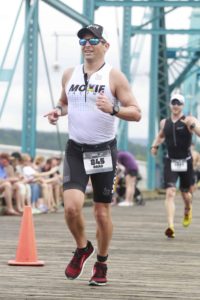 I was off and feeling pretty good even after the first long hill, but when I reached the first aid station I could already feel things start to slow down a bit. I was running under 9 minute miles, but I knew I couldn’t sustain it.
I was off and feeling pretty good even after the first long hill, but when I reached the first aid station I could already feel things start to slow down a bit. I was running under 9 minute miles, but I knew I couldn’t sustain it.
My mind already went into fix-it mode wondering what I needed in order to get send whatever I needed to my legs in order to maintain my cadence. After the mile 3 aid station a side-stitch reeked havoc on my insides and I slowed to a walk, but I was determined to keep the walking to a minimum. This was going to be a long half marathon.
I continued to walk every mile or 1.5 miles for a minute or so, before picking up the pace again. I grabbed everything I could think of in order to fuel my glycogen stores and sometimes it worked. Coke and Red Bull both would give me an instant lift, but it would only sustain me for a short duration before my legs would tire, the stitches would return and I was forced to slow down again.
Coming across the Chestnut street bridge to complete the first loop I caught up with my workout wife, Sonja Olsen. She was obviously upset. She mentioned she had an amazing swim and did really well on the bike, but was now frustrated because her run was less that she’d hoped. “Join the club”, I thought to myself.
The interesting thing she said, was that she didn’t want to let anyone down. I immediately went into a diatribe of how triathlon is an individual sport and the only one she would let down is herself. If she was doing the absolutely best she could, and that she honestly couldn’t push any more, that she was letting no one down.
Those words penetrated my own mind as I told her to keep her chin up and sped up to complete my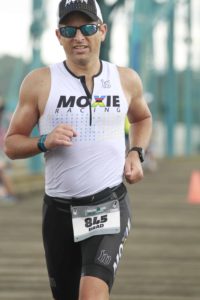 own race. The rest of the race, when ever I felt like I had to walk, I would ask myself honestly if I needed to or could I continue. More times than not I didn’t have to and I would keep running.
own race. The rest of the race, when ever I felt like I had to walk, I would ask myself honestly if I needed to or could I continue. More times than not I didn’t have to and I would keep running.
I reached the Chestnut Street Bridge for the final time and I picked up the pace. Everything hurt. My legs were like lead weights, I had stitches on both sides and I was a little light headed, but I was way to close to stop running.
Jumping and touching the arch with some sort of flair has become a popular way to finish at Ironman race for the Moxie team. As matter of fact, one of the members prints up calendars for the following year with all the dunk pictures.
While running up the red Ironman carpet toward the finish, the energy to try and make a Moxie dunk alluded me. However, I did try and while at the time it seemed kinda wimpy, the picture made it seem not so much.
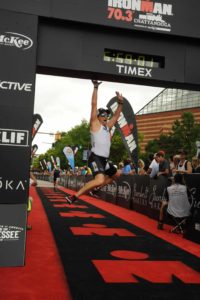
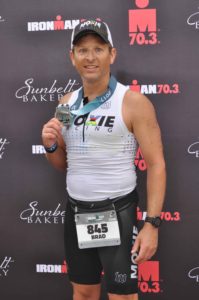 I crossed the Ironman Chattanooga 70.3 finsh line with a time of 5:25:55 which is a PR altogether by over 10 minutes. Unfortunately, the swim was over 500 meters short. Using the average pace and adding it back it would give me a 5:36-5:38. Subtracting the penalty of 5 minutes the actual race time would be 5:31 which would be a PR by 4 minutes. This of course is not reality. I cannot go back and swim those meters or erase my penalty, so while Ironman will consider it a PR I will not.
I crossed the Ironman Chattanooga 70.3 finsh line with a time of 5:25:55 which is a PR altogether by over 10 minutes. Unfortunately, the swim was over 500 meters short. Using the average pace and adding it back it would give me a 5:36-5:38. Subtracting the penalty of 5 minutes the actual race time would be 5:31 which would be a PR by 4 minutes. This of course is not reality. I cannot go back and swim those meters or erase my penalty, so while Ironman will consider it a PR I will not.
The rest of the day consisted of rest, beer, burgers, ice cream, good company and fun. It was still a tough race and while I did not get my vindication, I still progressed. I am proud of my race, but that was then, and now it’s time to focus on Ironman Costa Rica 70.3.
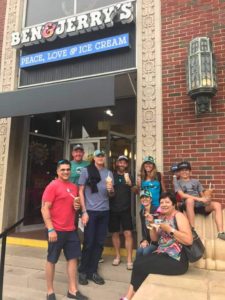
I have spent an abundance amount of time analyzing what I can do to help me hit my goals for the next races and here is what I came up with:
If I put these lessons into place, it should at lease help me succeed in my goals to continue to be healthy and decrease my time on the course. With the exception of number 2 I should be able to incorporate the other lessons for Costa Rica.
Carpe Vitam!
(Sieze Life)

Do you have any other tips for training?
Please leave a comment with your tip

September 25 was going to be my day. The Ironman Augusta 70.3 triathlon was finally here. The race I had been training so hard for on one of my favorite courses. It was four-and-a-half months since Ironman Chattanooga 70.3 and I was going to be ready to get my vindication and PR like I never had before. This was going to be my glory day. I knew it.
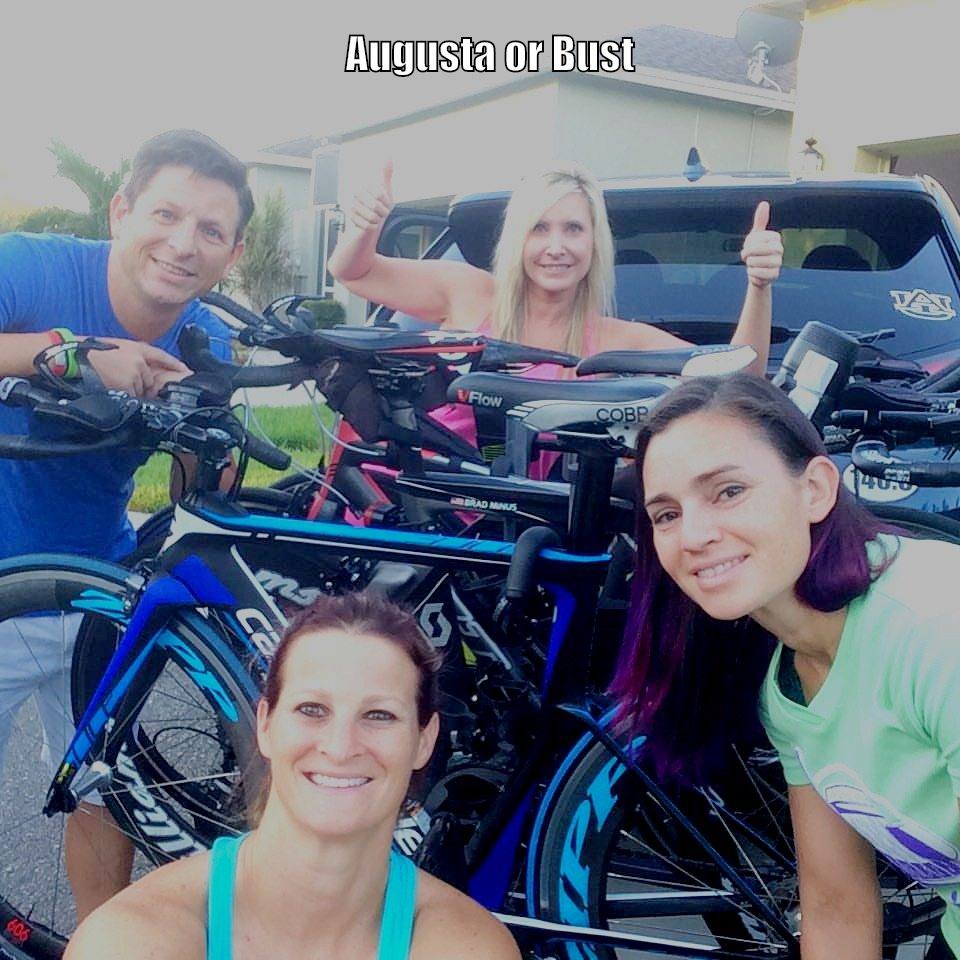
Driving up from Tampa, was a piece of cake. I had the presence of some beautiful and talented athletes; Maria Lopez Vijayanagar, Nancy Hepner, and our own personal driver, Jamie Breibart. Between awesome conversations, laughing and completing some work, the time flew by. Before we knew it, we were pulling up to the Marriott Hotel which housed the Augusta Convention center.
This was the first time ever, I stayed in the Ironman Augusta 70.3 host hotel. Actually, it was the first time I ever stayed in a race’s host hotel and I was excited.
The pounding of my pulse intensified with every step we took towards the expo. Check-in was a breeze especially on Friday afternoon since most of the athletes would probably wait until Saturday. The next thing I knew, I had my cool new swim bag containing my packet, t-shirt, and swag. A few moments later, I was standing in line to buy the traditional extras. Some athletes always get that year’s t-shirt, some pick something different every time, I get a coffee mug and water bottle with the race logo.
The vendors that provided booths were of the same variety as usual. Cliff bars, a local gear shop, BASE salts, a new pet food sponsor, and of course my friend Scott Rigsby with his foundation.
I have mentioned Scott in a few other posts. He was the first double amputee to finish the Kona World Championship Ironman. He went on to form a foundation to help soldiers with disabilities; The Scott Rigsby Foundation.
With that completed, we headed down to Mellow Mushroom for some much-deserved carbs to include one of our favorite carbohydrates. BEER. Craft Beer because I am a snob like that. If you ever get to try their Mega-Veggie pizza, go for it. It is magnificent, especially if the tofu is traded out for avocado.
After a long conversation at the bar that included my last drink before the race, it was time to get a good night sleep.
That, unfortunately, didn’t happen. Two nights prior I always prescribe a good nights sleep and only awake when the body is ready. This allows for maximal recovery for race day with ample healing of any inflammation.
I have no idea why. but sleep evaded me most of the night. I still felt rested upon getting out of bed around 7 am, but not as much as I would have liked.
It was a toss-up of whether to go and jump in the river with our wetsuits or not. Nancy had never swum in open water with a wetsuit and was nervous about the swim. I was also anxious to jump in to get a feel for the temperature and if my wetsuit was still functioning properly, so we headed down to the swim start.
We suited up and jumped in. The temperature was a little chilly at first, but within ten strokes it felt glorious. The current was running about 2 knots, so my strokes to the first buoy felt like slicing through butter.
Jaime and I waited at the first buoy while Nancy caught up to us. Her boyfriend Hans had arrived the night before and being a marathon swimmer, he was incredibly comfortable in the water. He talked her through jumping in and they met us at the buoy.
We splashed around and played like kids for a few minutes before we decided to head back. Now that was work. It was like swimming on a treadmill. We ended up swimming to the side and shimming up the dock instead. Funny thing was there was no way to use your legs to get on the floating dock. I muscled myself up and then brought up Jamie, Hans and finally Nancy. That was an experience.
To make matters worse there was a locked gate in front of us with nothing on either side except water. We had to carefully hang on the outer chain link fence to get around the locked gate door. It was like a pre-70.3 obstacle course.
With Nancy now comforted with the buoyancy of her wetsuit, and a real confidence booster for myself, we headed back to the hotel to get a quick ride in.
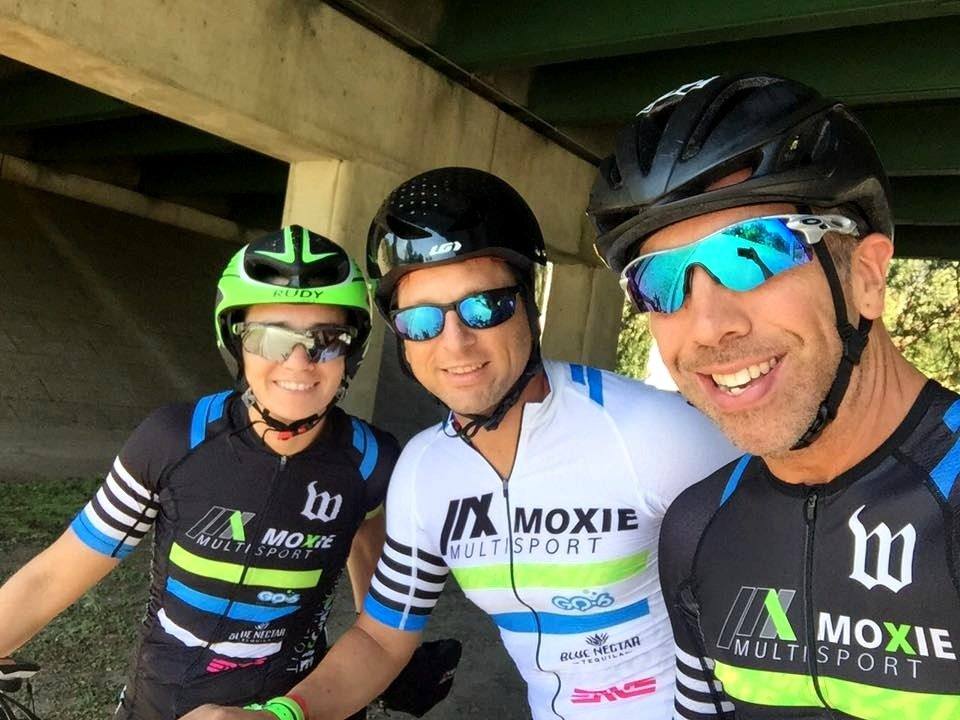
Maria and I headed out and on Broad St for about a mile when I heard Oscar Alvarez, a teammate from our national team Moxie Multisport, yell from the Holiday Inn. I have never had the chance to ride or even get to know Oscar so I was excited when he flagged us down. Donna Adams also joined us, from Moxie, as we headed out of town for about 15 minutes. We turned around and headed back.
I toggled through all my gears to include my small chainring knowing that there were some new hills added to the course. Everything seemed to work very smoothly, which just increased the intensity my excitement.
After dropping off Oscar and Donna at their hotels, Maria and I pedaled back to pick up Nancy and Jamie. I completed attaching the stickers on my bike and changed into regular shoes for the jog back. I, unintentionally, put my debit card and license in a bento box on my bike, and we headed out.
Again, things went very smoothly. We rode right in, racked our bikes and headed out. I had a pretty good position sitting almost the very middle of the transition area, just a few positions to the left of the aisle.
It didn’t seem like anyone wanted to jog back, and I was ok with that. However, about half-a-mile out, I remembered that I had my credit card and license on my bike. I gave my helmet to the ladies while telling them I would catch up and I started running back to transition.
This is the first season in seven-and-a-half years I have had any type of injuries. Earlier in the year, I was suffering from a stress reaction in one of my right metatarsals and lately, I had been suffering from some Achilles tendinitis. It was so wonderful to run and not feel any of that pain.
Running into transition I caught the site of April from my local team, Outspokin Multisport. I stopped and chatted for a quick second before continuing on to rescue my stuff. Confidently, I ran back out feeling really strong. I was lucky to run into two more Moxie teammates, Josh Otstot and Alex Bautista before finally catching up to Maria and Jaime.
The confidence was brimming with me throughout dinner at a local sushi and hibachi restaurant. I had rice, chicken and little sushi to fulfill my balance of carbs, protein, and good fats.
Fueled and completely prepped for the race, I fell asleep and remained in restful slumber until the alarms went off at 4:00 am.
Ironman rotates the start waves of their races, in order be fair to all of the Age Groups. In other words, while one year the 45-49 age group might be in an earlier wave, the following year that same group would be scheduled later. This year my age group was starting later at 8:28 am.
Since we didn’t need to travel to transition to setup race-ready, we dressed comfortably and headed out to the buses to be transported to the transition site.
Over the years, my experience in setting up my transition has been drastically reduced. I now can do a full setup and walk-through in just a few minutes where before it would take a lot longer. As I started placing bottles in the cages I noticed my rear tire was completely flat.
While a lot of athletes would consider this bad luck, I was grateful that I found it now rather than on the course. Not to mention, there was a maintenance crew here that would be far faster at repairing it than I would.
As it turned out, I was correct in that assumption. I handed the mechanic a tube, and they pulled my back wheel, changed the tube to include adding an extender, returned the wheel to my bike all within just a few minutes. With that, I was set up and ready to rock n’ roll.
Announcements flooded the air during our setup time in transition, of which most were normal except for the one big kicker.
“We are making history today. For the first time in Ironman Augusta history the swim will be not wet suit legal for age group awards.”
This was a little bit of a surprise. This was one of the reasons I loved this race. I am not the fastest swimmer but allow me a downstream swim in a wetsuit and I can hold my own. Unfortunately, now I just lost one of my advantages.
All the way back to the hotel, I took part in a lot of self-talk. Telling myself, that I had done the distance in the pool hundreds of times, and as the river was fresh water that is all this was. I also still had the advantage of the current which was moving between 1.5 and 2 knots. Not to mention, my transition time should be faster.
This calmed me down, as we headed back up to the room to prepare for our start times.
My breakfast of oatmeal, a banana, a cliff bar, and coffee went down easily as my anxiety slowly started to grow. I rolled out my legs, did some dynamic stretching, dressed, and headed over to Jaime’s room to pass the time before heading down to the swim start.
At 7:30 we walked down to the swim start as Nancy had an 8:04 start time, followed by me at 8:28, and Jaime at 8:40. As this would be Maria’s last race in the Pro division, she was already on the course.
I was pushing all of my positive energy to the forefront of my mind for Nancy. She was comfortable in the water during our test swim the previous day and while she could’ve still used her wetsuit, it would have meant starting at 9:30. With the temp already at 77 degrees that would have been for an even hotter race. I applauded her for deciding to go without and starting with her wave.
Before I knew it I gave hugs to Jaime, a number of other friends and teammates, and was in line with the rest of my age group.
At 8:24 the staff moved us to the dock where we would start. Usually, there is a rope start-line ten or so meters from the dock. This year they wanted us to start touching the dock. Due to the number of triathletes in my group, there was not enough dock to allow everyone a water start, so I was forced to stand on the dock and jump in when the horn blew at 8:28.
As I jumped in, the cool water prickled my skin as I surfaced and started my stroke. The anxiety completely wore off, and my heart rate decreased when I found my rhythm. I kept my mind quiet, focusing on reaching as far as I could while driving my hip down pulling myself through the water like a ladder.
I have written and said before, I am not the fastest swimmer by far. Actually, I am downright slow, but I have been working on it every season. You can imagine my surprise when I reached and found a foot there. I couldn’t believe it either, I caught someone. There truly is a first time for everything.
As I was maneuvering around the swimmer and was surprised again by a kick to my hand. Then I was boxed in a group and I thought, “This is great, I can just hang in here and take advantage of the draft.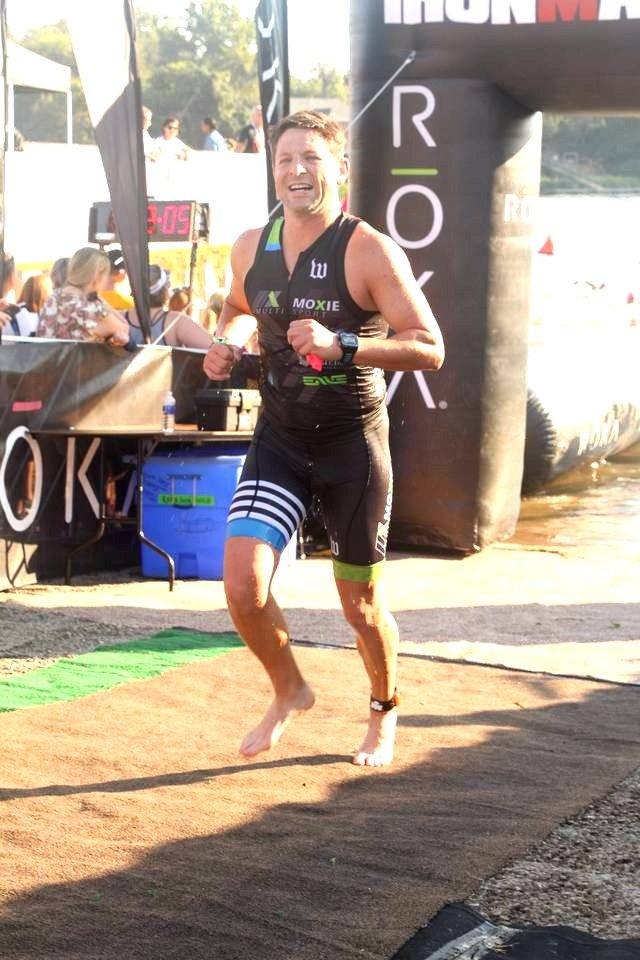 ”
”
Unfortunately, that didn’t last. The athletes on either side of me started swimming into me, throwing off my rhythm and the athletes in front slowed down so I was now getting kicked in the head.
I pulled back into a breaststroke and swam out of the way. It took a minute or so to get my breath and site line back so I could find my rhythm again.
Unfortunately, I experienced a similar scenario a little while later, with me resolving it in the same fashion. I was feeling a little peeved, but on the other hand, I was fascinated that I was forced to pass some of my fellow age group athletes in my weakest event.
With a huge smile on my face, I pulled off my cap and goggles as I ran into transition. I looked down at my watch and saw 34 minutes and change. That was a PR for me, not by much, but gave me a huge energy boost crossing the mount line as I began the bike portion.
This season was all about the bike. I have been focused on increased efficiency and speed on the bike during my training and my earlier results have proved that it had worked.
My ride felt like silk on the early portion of the bike. The derailleur was moving through my gear changes like butter, my goal power was ranging perfectly between 180 and 190 watts and my speed was a consistent 22 mile per hour. I felt like I was unstoppable.
The first set of hills uneventfully came and went without any kind of changes in effort level. The excitement was radiating from me because everything seemed to be coming together. I stuck to my nutrition plan and wattage like glue and just kept passing people.
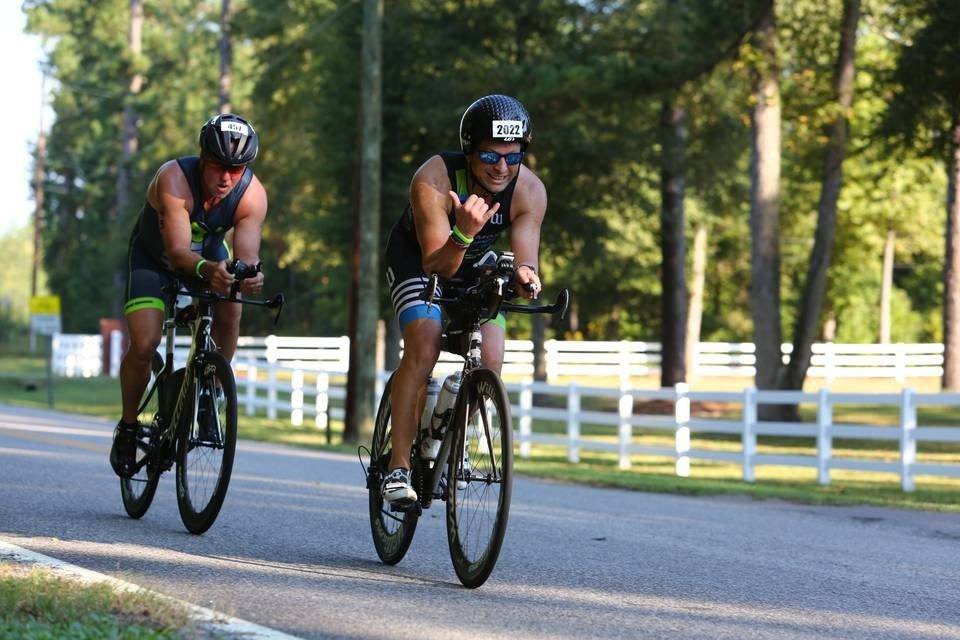 Another set of inclines came around mile 38. These were the grade of hills that bring your speed down to 9 miles an hour. I kept a cool head knowing that what goes up, must come down and I would make up the speed on the decline.
Another set of inclines came around mile 38. These were the grade of hills that bring your speed down to 9 miles an hour. I kept a cool head knowing that what goes up, must come down and I would make up the speed on the decline.
At mile 42, I noticed my time. Big Mistake. All of the sudden I was concerned that I was under 21 miles an hour of which I was consistent for the ride prior. Had I really slowed down that much? My goal was 21 mph, and I was thinking it was conservative. It would allow me to finish the bike in 2:39, but now that goal was in danger.
Around mile 45, I started to feel a little sluggish, so I took an extra gel and finished the formula in the current reservoir. Unfortunately, it took awhile for my digestive system to process the extra calories, as the following five miles felt very slow.
The last five miles were either downhill or pretty flat. I was consistently riding between 22 and 23 MPH, but it wasn’t enough. I rolled into T-2 in 2:48.
Just prior to the dismount line, my thoughts went to the run. I had decided I just needed to pick-up the pace 15-20 seconds for a few of the miles and I might just be able to make a lot of it up. Even if I didn’t hit my goal of 5:17, I would still PR.
I was ready to hit the dismount line running into T-2, but when swung my leg over my seat a pain in my hip almost made me fall. “What the hell?” were the words that came out of my mouth for everyone to hear.
I tried to run my bike into T-2, but they would not move. My legs just refused to do anything other than walk. My thoughts drifted to other races and my internal dialogue was encouraging reflecting my previous history of my legs waiting to transition at mile 3.
I changed my shoes, grabbed my race belt and hat and headed out, with a brief stop at the portlet. I tried to jog a little, but a stabbing pain was radiating both hips, so I walked very briskly. No problem, I strategized taking in a little more salt, some water and jogging to mile 3 where my legs would magically open up and I would finish around 2 hours. The goal not reached but still a PR.
Unfortunately, it never happened. Mile 3 came and went with me running slowly for a tenth to a quarter mile before having to walk. The pain radiating through my legs while running, but disappearing while walking.
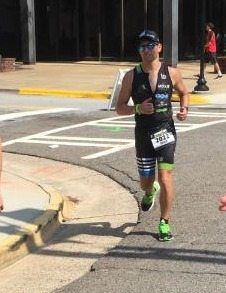 I went back to my training. Asking myself what I thought was happening physiologically. Tracing the muscles radiating from the hips, and assessing each individual pathway. I was at a complete loss. I had no idea what was going on.
I went back to my training. Asking myself what I thought was happening physiologically. Tracing the muscles radiating from the hips, and assessing each individual pathway. I was at a complete loss. I had no idea what was going on.
Over the next few miles, I did everything possible to go from aid station to aid station stuffing ice down my shorts trying to numb my hips. Unfortunately, the temperature and humidity were increasing as well. I didn’t feel like it was really that warm, but I noticed all the walkers.
The last four times I did this race, there were finishers that walked, but I didn’t recall the immense number of walkers I was noticing. There were more athletes walking than running. It didn’t make me feel any better, but there was definitely something going on.
The first time I completed Augusta I recall it being even hotter, but not nearly the amount of walkers I was noticing this year.
The rest of the run was more of the same. a quarter to a half mile of running and then I walked until the pain subsided. I was constantly making deals with myself to run just a little longer each time.
After 2 hours, mile 10 was the marker I was finally able to surpass feeling completely defeated, angry, in pain and embarrassed. I was doubting everything I ever learned, my ability as an athlete and as a coach. If I couldn’t get through a 70.3 in less than 6 hours what right did I have to coach other people?
When I finally turned the corner towards the finish line, Maria, Jaime, and Hans all had their cameras or phones out. I was trying to signal to them not to take a pic because I felt so ashamed.
Crossing the finish line was completely anti-climactic as my watch blinked 6:16. The slowest time since my first 70.3. I didn’t care about it and I almost passed up the people handing out the medals. At the time I am writing this I still have not hung the medal on my wall with the others.
I grabbed a coke from the food tent and proceeded to find Jaime, Maria, and Hans. We watched Nancy run by just prior to the halfway point, cheering her on and encouraging her to keep moving forward.
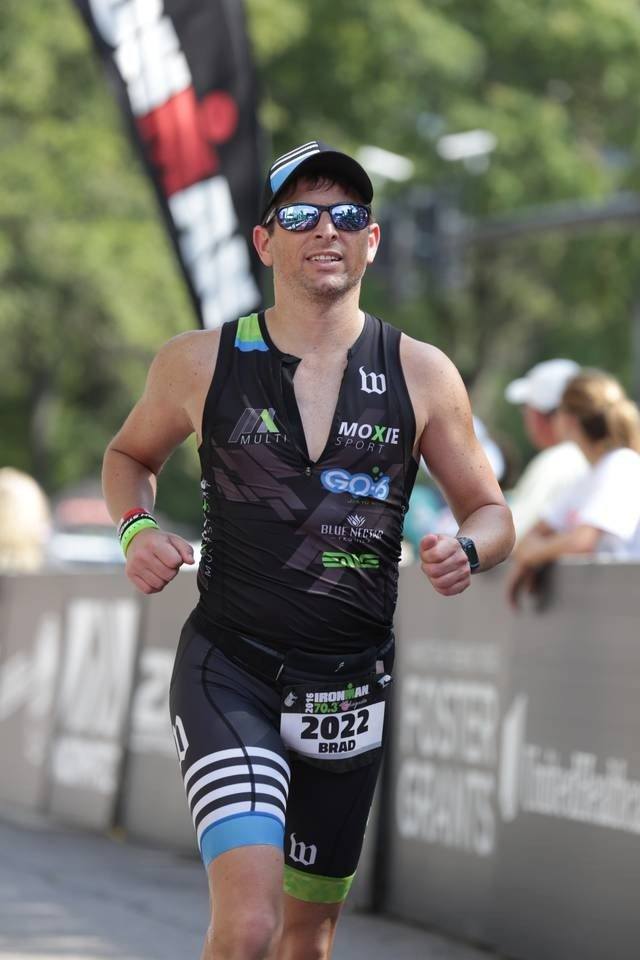 After that, I followed Maria back to the hotel and we chatted. She expressed her disappointment with her race, especially the run. I tried to be upbeat, but my thoughts were very negative. I really don’t like being that way. It makes me feel weak.
After that, I followed Maria back to the hotel and we chatted. She expressed her disappointment with her race, especially the run. I tried to be upbeat, but my thoughts were very negative. I really don’t like being that way. It makes me feel weak.
I left the celebration early that night and went back to the room. I packed and escaped into the mindless abyss of television just wanting the day to be over.
Over the next days, I reviewed the race, trying to resolve my issues on the run. I realized there is one crucial element of my training that I neglected this season. Massage.
In the past, my regimen included regular visits to my License Massage Therapist. That habit has been occurring for every season of training for five years prior. I completely neglected this avenue of my training this season. Was this the answer? I have no idea, but I will be taking that lesson and integrating back into my routine.
The release of negativity was a relief since returning home. My coach, Jon Noland, always says the best thing an athlete can have is a short-term memory. I have taken the lessons from this race, and now I am moving on to my next challenge.
CARPE VITAM!

I have been an endurance coach for some time now. Once in a while, I receive an email from a client which chokes me up with pride. Today, I received one of those letters, so instead of sharing it via a Facebook post, I decided to copy it here.
“Hello, Brad,
To reflect for a moment – It’s been about a year that you’ve been my coach. I have learned so much more than I ever would from a book, hanging out with colleagues, or trying to figure it out by myself. When I met you, I had been trying for years to run past 3 miles and frequently injured myself — I could never get past 3 miles was super frustrated, hated running, and I was very slow. In fact, none of my times in any of the sports were improving. After a couple of months working with you on form and technique, I tripled the number of miles I could easily run, I increased my speed and had absolutely no injuries. You have inspired me to try things I would never consider trying, regularly pushing me out of my comfort zone and helping me accomplish things I didn’t think were possible or I would ever have the guts to do (e.g., swim in cold water– you have no idea what a big deal that is– running a 10K, and riding in bike groups).
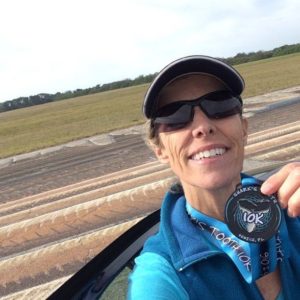
I felt like I couldn’t find anyone that would be interested in coaching me as an age grouper and being new to triathlon. Finding you was such a blessing because I feel like you treat me like a pro– you respect me for where I am, what I am trying to accomplish, and my repetitive silly questions (e.g. What is “PR?”). Your positive attitude is contagious and inspiring.
Everything you have taught me has been instrumental in reaching my triathlon goals and even helping me win the FD3 Series in my age group! That’s pretty cool! You’ve also worked around my schedule and needs to perfectly tailor the perfect program for me as an individual and because of that, I’ve gained improvement in running, swimming, and biking. I’m really grateful you don’t just prescribe a “one size fits all” approach– you related it to my personal needs.
I look so forward to our weekly calls, and knowing that someone is there holding me accountable, there to support me when I’m feeling discouraged, and perhaps more importantly, there to celebrate every success, no matter how big or small! It makes my day when I get random emails commenting on some aspect of my training. I can’t even begin to summarize how much I’ve learned from you. I’m constantly impressed by how well-informed and experienced you are– no matter how random I think my question might be, you always have an answer that is backed up by facts/literature/experience, etc.. Even when some random muscle hurts, your solutions have always worked!
I’m also thankful that you include the nutritional elements since that is a critical part of training and performa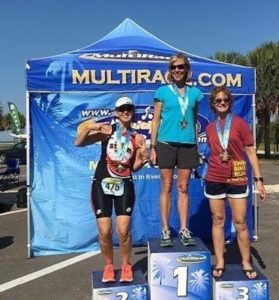 nce, as I’m slowly learning and trying to get better at communicating.. I had no idea how important all of this was.
nce, as I’m slowly learning and trying to get better at communicating.. I had no idea how important all of this was.
So, in about 8-10 months of working with you, I’ve tripled my running distance, increased my run pace by a couple of minutes, increased my bike speed by several MPH and have become a stronger, more efficient swimmer. I have completed two Olympics and several Sprints– without any injury! And it’s been a lot of fun, I’m totally hooked! I’m looking forward to the 70.3 journey (just one, I don’t have time to sustain that level of training!), and getting on the podium for an Olympic at some point ; )
I have complete trust in the process you are leading me through, and it is definitely generating results. I’m so grateful for who you are, what you do, and your passion.
So over time I say thank you– please know there is so much more behind just those two words– it’s hard to express all the gratitude and appreciation that is in my heart and mind. So again, thank you. ~ Laura”
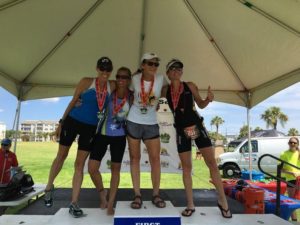
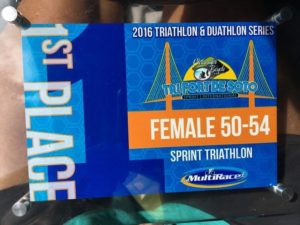
This was written by my client Laura Engleby whom just as she has detailed, took 1st in her age group in 2 of the FD3 Series Sprint Triathlons and 3rd in the last one. These accomplishments gave her 1st place for the series. She also took 4th in her second Olympic distance triathlon. She put in the work, took the prescribed suggestions and followed the plan we made for her.
I cannot even put into words how proud I am of this woman and what she has accomplished in the short amount of time I have been privileged to be coaching her.